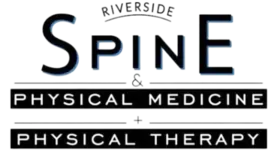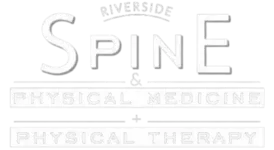Ignoring pain after a car accident is a mistake many make, thinking discomfort will fade away on its own. However, failing to address symptoms like neck stiffness or lingering car accident pain can lead to serious long-term issues, including chronic pain or even internal bleeding. This article discusses the importance of seeking immediate care and how physical therapy plays a vital role in recovery. By understanding the signs that indicate the need for therapy, readers will learn how to prevent future injuries and ensure a smoother recovery journey. Engaging with this content will empower individuals to take proactive steps towards healing and maintaining their well-being.
Why Ignoring Pain After a Car Accident Can Lead to Long-Term Issues
Neglecting pain following a vehicle accident can result in serious long-term consequences. Understanding the nature of accident-related pain, including issues like soft tissue injuries, dizziness, and ongoing neck pain, is crucial. Unaddressed pain may lead to chronic conditions and additional complications, such as prolonged bleeding or discomfort. The following sections will delve deeper into the specific long-term effects and the significance of seeking timely physical therapy for recovery.
Understanding the Nature of Accident-Related Pain
After a vehicle collision, individuals often experience specific types of pain related to strains and injuries. For instance, soft tissue injuries, such as tendon strains, may not always present immediate symptoms, leaving someone unaware of underlying damage. Recognizing that pain, such as a nagging discomfort in the lower back, may indicate a severe condition is essential for obtaining an accurate diagnosis and effective treatment.
Moreover, when an airbag deploys, it can cause sudden jolts to the body, contributing to issues like whiplash, which can manifest as persistent neck pain or headache. If someone says their back hurts after being rear-ended, it’s a signal that warrants professional evaluation. Addressing these symptoms promptly through physical therapy can significantly reduce the risk of chronic pain and improve recovery outcomes.
Common Long-Term Effects of Unaddressed Pain
Ignoring pain after a vehicle accident can lead to persistent issues, particularly regarding connective tissue injuries. Over time, unaddressed conditions may evolve into chronic problems, such as knee pain or ongoing back pain after getting rear ended. These situations may require complex treatments, including surgery, to alleviate suffering and restore function.
Additionally, untreated pain can lead to complications that necessitate the use of corticosteroids or other interventions. For example, a person experiencing consistent discomfort may develop mobility issues or compensatory habits that exacerbate their condition. Seeking timely physical therapy can help mitigate these risks, allowing for a more effective recovery and minimizing long-term repercussions.
The Importance of Seeking Immediate Care After an Accident
Initial evaluations are vital for identifying injury risks, particularly injuries to the spinal cord, cervical vertebrae, or potential abdominal pain after a car crash. Medical documentation during these appointments not only ensures proper treatment but also provides necessary evidence for future healthcare needs. Understanding these aspects aids in facilitating timely physical therapy and promotes effective recovery.
How Initial Evaluations Identify Injury Risks
Initial evaluations after a vehicle accident serve a crucial role in identifying injury risks that may not be immediately apparent. Medical professionals can assess the extent of potential damage to the spine, including vertebral compression fractures, which can develop due to sudden impact. Recognizing these risk factors early can significantly influence the treatment plan, reducing the likelihood of further complications related to mobility and pain.
During these evaluations, the assessment of motion and neck alignment is vital. Any restrictions or abnormal movement patterns can signal underlying issues, helping healthcare providers formulate an effective recovery strategy. Early intervention with appropriate physical therapy can address these concerns swiftly, improving long-term outcomes and minimizing the risk of chronic pain conditions that may arise from untreated injuries.
The Role of Medical Documentation in Treatment
Medical documentation plays a critical role in the treatment of injuries sustained from a car accident. Timely and accurate records allow healthcare providers to track symptoms such as back pain after being rear ended, shortness of breath, or headaches resulting from potential skull injuries. This documentation not only assists in devising an effective treatment plan but also provides essential evidence that may be necessary for future medical needs or insurance claims.
In addition to supporting immediate care, medical documentation helps monitor the patient’s progress, influencing decisions regarding physical therapy and further evaluation. For example, if a patient reports difficulty in sleep due to pain, this information can be pivotal in adjusting the treatment approach to address underlying issues comprehensively. Thorough records ensure that healthcare providers can respond effectively to evolving symptoms and support long-term recovery goals.
Physical Therapy as a Key Component in Recovery
Physical therapy plays a vital role in addressing specific injuries resulting from a vehicle accident, such as soreness after a wreck and fatigue. Various techniques, including manual therapy and exercise regimens, help alleviate pressure on affected areas, improve mobility, and manage pain effectively. This section will explore how physical therapy supports recovery while minimizing reliance on medication and addressing any issues impacting the brain or overall well-being.
How Physical Therapy Addresses Specific Injuries
Physical therapy effectively addresses injuries resulting from an auto accident by utilizing a range of therapeutic techniques tailored to individual needs. For instance, patients often report headaches or mood changes stemming from neck injuries or stress from the overall trauma of the incident. By implementing targeted exercises and manual therapy, physical therapists can alleviate irritation and tension in the musculoskeletal system, promoting recovery and enhancing emotional well-being.
Incorporating strategies such as relaxation techniques and postural training, physical therapy not only focuses on physical healing but also on reducing stress levels associated with pain and discomfort. This holistic approach assists patients in managing symptoms that may disrupt their daily lives, such as persistent headaches, providing them with practical tools to cope with their feelings of frustration. Through consistent therapy sessions, individuals can regain function and confidence, improving their overall quality of life following an auto accident.
Different Techniques Used in Physical Therapy
Physical therapy employs various techniques to handle the diverse injuries that can occur following a car accident. For instance, if a patient notes that their head hurts after an accident, therapists may use cervical mobilization to relieve tension in the neck and improve movement. Techniques such as therapeutic exercises and manual therapy are also vital for addressing discomfort in the abdomen or easing pain associated with injured thoracic vertebrae, ensuring a comprehensive approach to recovery.
Another essential technique in physical therapy involves joint mobilization, which focuses on restoring range of motion and alleviating stiffness. This method can significantly benefit patients with ongoing pain in areas like the back or joints after an accident. Additionally, cognitive rehabilitation strategies may be utilized to assist those experiencing memory challenges or emotional distress, fostering overall recovery and supporting both physical and mental health as individuals navigate the aftermath of their injuries.
The Role of Physical Therapy in Pain Management
After a collision, the body often experiences a surge of adrenaline, which can mask pain immediately following the event. However, injuries like airbag injuries to the chest or other soft tissue damage may not manifest right away, creating challenges for effective pain management. Seeking the help of a physical therapist plays a crucial role in addressing these injuries, helping individuals understand and manage their pain effectively, thereby preventing long-term issues that could arise from untreated conditions.
Physical therapy focuses on individualized treatment plans that address specific symptoms and promote healing in the aftermath of an accident. Whether it involves targeting pain resulting from airbag injuries or other effects of the collision, therapists employ various techniques to relieve discomfort and improve mobility. Engaging in consistent physical therapy not only aids in pain management but also provides valuable support during recovery, allowing patients to regain their strength and confidence as they navigate their journey post-accident.
Recognizing the Signs That Physical Therapy Is Needed
Monitoring persistent pain symptoms after a motor vehicle accident is essential for recognizing the need for physical therapy. Symptoms affecting lumbar vertebrae, ongoing discomfort, and limitations in everyday activities can indicate underlying issues related to personal injury. Understanding these signs is vital for effective healing and long-term recovery, providing a clear path to addressing functional limitations impacting daily life.
Persistent Pain Symptoms to Monitor
After a vehicle accident, individuals should remain vigilant regarding persistent pain symptoms. Experiencing radiculopathy, which may present as shooting pain radiating down the arm or leg, can signal pressure on the nervous system and requires prompt evaluation. Additionally, head pain after an accident not only affects daily life but may also indicate underlying issues that need immediate attention.
Recognizing changes in physical comfort is crucial for long-term recovery. If pain in the arm or neck persists beyond the initial shock of the incident, it is essential to seek professional guidance. Ignoring these signs can lead to chronic conditions that complicate recovery efforts and result in prolonged discomfort, emphasizing the need for effective physical therapy strategies to restore function and well-being.
Functional Limitations Impacting Daily Life
After a car accident, injuries can lead to functional limitations that significantly impact daily activities. Individuals may struggle with basic tasks, such as bending down to tie shoes or lifting objects, due to discomfort in the back or legs. For those experiencing tissue damage, using a heating pad may provide temporary relief, but it’s crucial to seek professional help to address the underlying issues and restore mobility.
Moreover, persistent pain can affect more than just physical tasks; it can also impede vital activities such as using the bladder freely or participating in social interactions. Injuries that go untreated often lead to a decline in overall quality of life, causing frustration and anxiety. Recognizing these functional limitations serves as an essential step toward understanding the need for targeted physical therapy to achieve effective long-term recovery.
The Recovery Journey: What to Expect From Physical Therapy
Setting realistic recovery goals with a therapist is essential for those managing pain after a car accident. This collaborative process helps individuals focus on specific issues, such as shoulder discomfort following a car crash. Assessing progress through regular tracking ensures that improvements are evident over time, promoting a clearer path to healing and minimizing the risk of long-term disease related to untreated injuries.
Setting Realistic Recovery Goals With Your Therapist
When recovering from a car accident, establishing realistic recovery goals with a therapist is essential for regaining function and improving quality of life. For instance, if a patient reports that their neck hurts after a fall, the therapist and physician can collaboratively set a goal to enhance the range of motion in the neck over a specified period. This process enables patients to visualize their progress and stay motivated throughout their rehabilitation journey.
Moreover, addressing specific injuries, such as those related to facet joint dysfunction, requires careful planning in therapy sessions. Through open communication, therapists can help individuals understand the stages of recovery and adjust their expectations as they progress. This structured approach not only fosters a stronger recovery mindset but also empowers patients to take an active role in their healing process, thereby contributing to better outcomes.
Assessing Progress: Tracking Improvements Over Time
Tracking improvements over time is essential for individuals recovering from pain after a car accident. A physical therapist will monitor symptoms such as weakness, stiffness, and edema in the affected limb, providing key insights into the patient’s recovery process. Regular assessments can pinpoint specific areas that need further attention, allowing for adjustments in the treatment plan that align with the individual’s progress.
During therapy sessions, the therapist may implement specific tests to evaluate strength and range of motion. By documenting changes in symptoms, patients gain a clearer understanding of their healing journey. This structured approach not only motivates individuals but also encourages them to actively engage in their recovery, addressing issues that may arise, such as persistent stiffness or localized weakness in the limb.
Preventing Future Injuries Through Physical Therapy
Strengthening muscles through targeted exercises helps patients reduce the risk of re-injury by addressing pain, spasms, and sprains. Additionally, ergonomic adjustments and education for daily activities are crucial in preventing nerve strain and other complications. These strategies empower individuals to adopt safer practices, ultimately supporting long-term recovery and improving overall well-being.
Strengthening Muscles to Reduce Risk of Re-Injury
Strengthening muscles is a key component in reducing the risk of re-injury following a car accident. Physical therapy often incorporates targeted exercises that focus on specific muscle groups affected by previous injuries. By actively engaging these muscles, individuals can decrease inflammation and avoid complications such as nausea or discomfort during daily activities.
Moreover, consistent muscle strengthening not only improves overall stability but also supports proper body mechanics, which can prevent additional injuries. Therapists may use techniques like resistance training to build endurance and flexibility while addressing any muscle imbalances. This comprehensive approach empowers individuals to regain confidence in their movements and lowers the chances of suffering from chronic pain associated with past trauma.
Ergonomic Adjustments and Education for Daily Activities
Ergonomic adjustments play a significant role in preventing future injuries for individuals recovering from a car accident. By modifying workspaces and daily environments, individuals can reduce strain on their bodies and avoid unnecessary discomfort. For instance, adjusting chair height and using back support can improve posture during prolonged sitting, which is crucial for those dealing with back pain or other musculoskeletal issues resulting from their injuries.
Education on proper body mechanics during everyday activities is equally important. Understanding how to lift objects correctly or maintain an optimal position while using a computer can greatly diminish the risk of aggravating existing injuries. Incorporating these practical strategies into daily routines empowers individuals to take charge of their recovery and significantly enhances their long-term well-being, ultimately reducing the likelihood of re-injury.
Final Thoughts
Ignoring pain after a car accident can lead to severe complications, emphasizing the need for immediate medical attention and evaluation. Early intervention through physical therapy not only addresses specific injuries but also mitigates the risk of developing chronic conditions. Understanding the importance of ongoing care empowers individuals to actively participate in their recovery journey. By prioritizing timely treatment and embracing physical therapy, patients can significantly improve their long-term health and regain a sense of normalcy in their lives.



